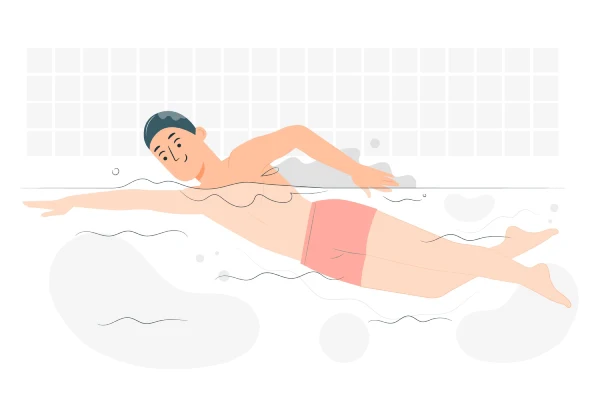Swimming- One of the Best Activities for the Heart and Lungs
Swimming is one of the best ways to bolster your cardiovascular and respiratory systems. You can also improve your strength and flexibility and lose weight, all without the pounding and pumping of most land-based activities. Water’s buoyancy also makes it the ideal environment for injury-free exercise. Start attending the liquid gym if you hate breaking a sweat but want an effective workout.
Swimming laps in the pool virtually work all the major muscle groups in the body. It has all the cardiovascular benefits of activities like running or cycling. In an article titled, Aquatic Exercise: Medical Considerations, Dr. Scott Sarran writes that swimming is almost unrivaled in producing cardio and musculoskeletal benefits. It also uses more muscle groups than most other exercises, particularly the large back and leg muscles. And ladies, every kick is powered by the glutes, making it one of the best ways to boost a drooping rear end.

Swimming for Weight Loss
But is swimming an ideal activity for losing weight? The old myth that swimming doesn’t burn fat because your heart doesn’t have to work as hard is simply a myth. Indeed, your heart rate may decrease by 10-15 beats per minute in cooler water. A lower body temperature equals a lower heart rate. But your lungs have to work harder, and your oxygen consumption is increased because of the pressure of the water. Sixty minutes of lap swimming can result in a 350 – 660 (depending on how vigorously you’re swimming) calorie loss.
The pool also provides you with the perfect stress-free and noise-free environment that’s ideal for long, gentle workouts. Researchers are finding that a slow, steady workout with increased duration can be just as effective for fat loss as a quick, intense workout.
If you’re ready to dive in, effective swimming workouts require a certain amount of skill since breathing rhythm and technique are key. You may want to take some lessons to master the basic strokes so you’re not just splashing around.
Create a Good Swim Program
Begin a lap program by swimming 100 meters, four laps in a 25-meter pool, with a one-minute rest period between each lap. Gradually increase the number of laps you can do continuously. Swimming is predominantly aerobic if you swim slowly without stopping for 15-20 minutes. Aim to swim for at least 20 minutes without stopping. Again, focus on low-intensity and long duration. Also, be mindful of how you’re feeling with regard to fatigue. Remember, your heart rate may not be a good indicator of how strenuous your swimming is. Water provides a protective environment for joints and ligaments. The lower-intensity workouts mean less stress recovery time for your body. This means you can swim more frequently and for longer periods than you could engage in land-based activities.

Maximize the cardio, toning, and fat-burning benefits by using different strokes to vary the muscles you work. For example, the breaststroke and the butterfly stroke are great leg toners because they emphasize kicking. Practice interval training in the pool by combining lap swimming with short one to two-minute bursts of vertical aqua exercises. Try water walking or jogging, even jumping jacks and scissor steps with alternate arm punches. Water is almost 14 times thicker than air, offering resistance in every direction.
Aquatic equipment can also intensify your workout. Kickboards and hand paddles isolate muscle groups for specific conditioning.
In Conclusion
Try swimming if you’ve been looking for a new and refreshing way to get or stay in shape. Swimming workouts can be easily tailored to match your abilities and benefit everyone, from athletes to seniors. It’s one of the best ways to gain cardiovascular endurance, help lose and control weight and improve strength and flexibility.
For more information, contact us today.


